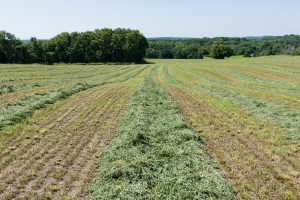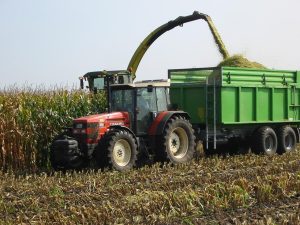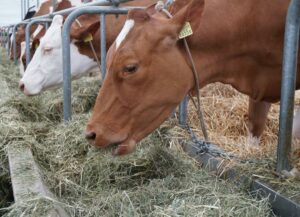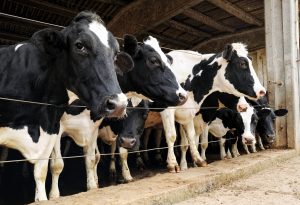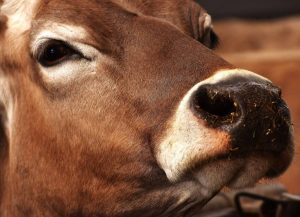Álvaro García
The use of alternative forages in dairy cattle diets is gaining attention as producers seek ways to mitigate forage shortages, reduce feeding costs, and maintain herd productivity. Soybeans and sunflowers offer viable alternative forages, particularly in regions where conventional forages like corn silage or alfalfa hay are limited due to climate constraints or economic factors. In this article we explore the nutritional value, harvest methods, and feeding considerations of soybean and sunflower silages, drawing from published research to provide practical recommendations for dairy producers.
Soybean silage
Soybean plants for silage should be harvested before the pods fully develop to optimize nutrient retention and moisture content. Delaying harvest until full maturity results in reduced digestibility and fermentation challenges due to lower moisture and increased oil content. Mixing soybean silage with corn silage at a one-third ratio can help improve fermentation by supplying soluble sugars and reducing total fat content.
Direct-cut soybean silage typically contains between 22% and 30% dry matter (DM). Ensiling at this moisture can increase effluent losses and the risk of butyric fermentation. Targeting DM contents of 35% to 40% is recommended to improve fermentation quality. Due to soybeans’ high buffering capacity, fermentation may be challenging, but the use of silage inoculants can enhance stability and limit mold growth. Additionally, producers should verify herbicide restrictions before using soybeans as forage.

Research by Ghizzi et al. (2020) examined the effects of replacing corn silage with soybean silage in dairy cow diets at the following inclusion levels:
- 16.7% of diet DM
- 33.3% of diet DM
- 50.0% of diet DM
The study found that increasing soybean silage in the TMR led to a linear decrease in dry matter intake, nutrient digestibility, and milk yield. However, there was a notable increase in the concentration of unsaturated fatty acids in milk fat, potentially improving milk quality. Additional research has shown that while soybean silage provides significant protein, its fiber digestibility is lower than that of corn silage, which may impact total tract digestibility and energy availability. To maintain milk production, balancing soybean silage with energy-dense forages or supplements is essential.
Sunflower silage
Sunflower silage can be a useful forage option, especially when conventional forages are scarce. On a dry matter basis, sunflower silage contains moderate crude protein levels (approximately 12.5%) and a higher fat content (ranging from 7.1% to 10.7%, depending on variety) compared to corn silage. However, it also has significantly more fiber and up to three times as much indigestible lignin, which reduces its overall energy value. Due to these characteristics, sunflower silage is best suited for lower-producing dairy cows, dry cows, or growing heifers.

Mixing sunflower silage with other forages
Sunflower stalks contain significant amounts of water, making it important to delay harvest until after the first killing frost to allow moisture reduction. The optimal harvest stage occurs when the leaves begin to dry, and the flowers start to droop, typically resulting in silage with around 30% DM. Harvesting at higher moisture levels increases the risk of poor fermentation and lower silage quality.
Sunflower silage alone has poor fermentation properties due to its high fiber content, low dry matter, and high pH. Research by Tan and Dumlu (2015) reported that mixing sunflower silage with corn or alfalfa plants can improve its nutritive value and fermentation. Corn plants are particularly beneficial as they increase dry matter, improve fermentation (by lowering pH), and enhance the physical characteristics of sunflower silage.
Sunflower silages with at least 50% corn inclusion at the late harvest stage demonstrated the best overall fermentation. Adding alfalfa increases crude protein content but also raises pH, which can negatively affect fermentation stability. In terms of physical quality, corn-based sunflower silage had superior texture and visual appeal, while sunflower-alfalfa mixtures were less stable due to their higher pH. Therefore, for optimal silage quality, sunflower silage should be ensiled with at least 50% corn, particularly when harvested at the late stage.

Practical feeding strategies
- Mixing with other forages: Both soybean and sunflower silages should be combined with other forages like corn silage or alfalfa hay to maintain a balanced nutrient profile.
- Monitoring milk production and composition: Regularly evaluating milk yield and composition helps determine the optimal inclusion rates of these alternative forages.
- Inoculant Use: Due to the high buffering capacity of both forages, microbial inoculants can improve fermentation efficiency and minimize spoilage risks.
- Herbicide restrictions: Producers should confirm that selected forage crops comply with herbicide withdrawal guidelines before feeding them to dairy cattle.
Soybean and sunflower silages can be valuable alternative forages for dairy cattle, particularly when conventional forages are in short supply. However, their inclusion should be carefully managed to maintain animal performance and milk quality. Adjustments in ration formulation may be necessary to compensate for differences in nutrient composition compared to conventional forages. Ongoing research continues to refine recommendations for integrating these forages into dairy production systems.
The full list of references used in this article is available upon request.
© 2025 Dellait Knowledge Center. All Rights Reserved.


